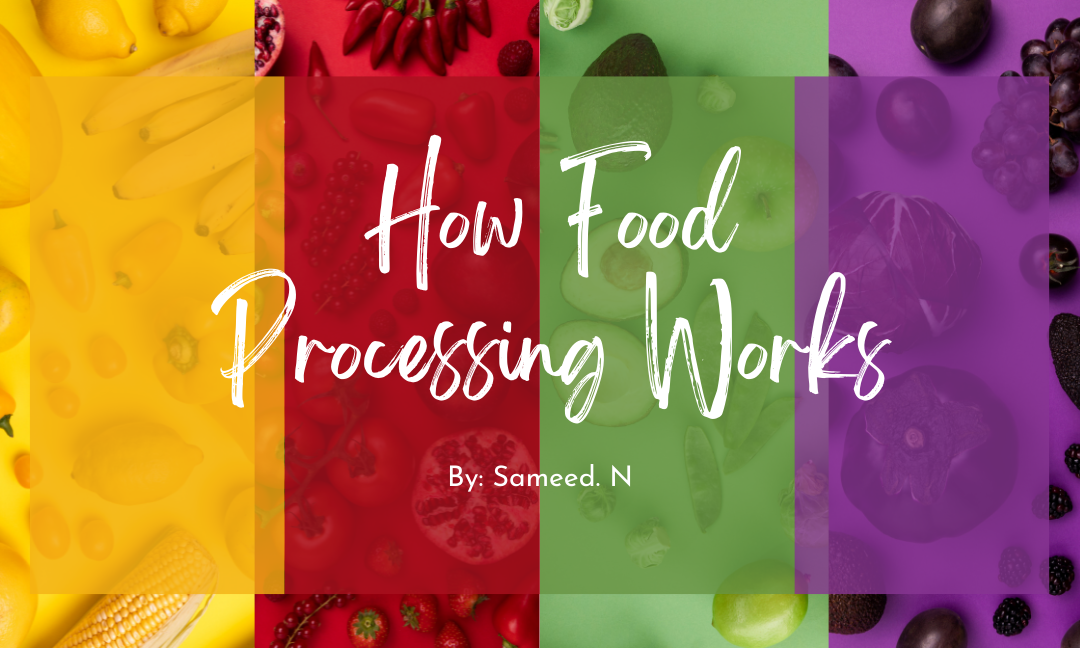Written By: Sameed N.
Edited By: Kayla McMichael
Designed By: Jiya
Published By: Maryam Khan
When grocery shopping, I’m sure that many of us have wondered about the processes our foods had gone through to be clean and safe for us to eat. Based on how much you have researched these processes, you could have assumptions, but they may not be as short or simple as you think. Food processing is important to remove microorganisms living in the food which may cause diseases and to extend shelf life. There are many different processes that foods go through such as refining, grinding, milling, and more. Certain food items may go through some procedures that other items don’t, based on their natural states. In this blog, I will go through some major, common processes that most of our foods go through.
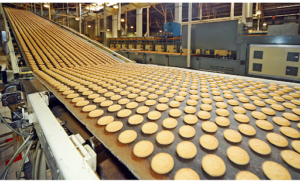
If you are looking for specific processes that some unique groups of food go through, here is a chart made by the Encyclopedia of Occupational Health and Safety which lists them, along with other ways they are prepared for consumers.
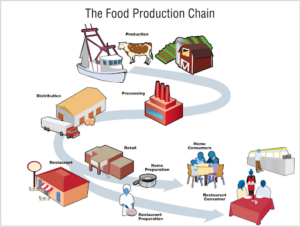
After being grown and extracted from farms as crops, our food is sent to factories where all the processing takes place. Many crops are transformed into other foods through processing. For example, wheat is grown on farms but is then processed to create products like bread, with the help of other crops. One of the most important processes that initially takes place is the cleaning of food. Some foods are washed, but other foods that are later turned into low-moisture foods like grain and cereal, require dry cleaning. A major process that can be divided into smaller, other processes is milling. This is a process where our food is cleaned, broken down, sized, and assessed for desired results. Some foods like wheat and rice are broken down into smaller pieces or flours to improve palatability, reduce cooking time, and create food products. Grinding is a cofactor of milling, where larger foods are broken down to sizes proportional to desired servings.
UDAWAT shares their 6 steps of wheat milling. The first step is the cleaning of the food, which includes removing waste like sticks and rocks from the food. Then, tempering and conditioning occurs. Here the wheat is put into water so that the bran, or the outer layer, could be removed easily. This is useful as it ensures that the grain inside is moist throughout, and that the bran does not break apart later in the milling process. After that, gristing takes place. This mixes the wheats together to create the desired type of flour. At step 4, products of gristing go through multiple rolling machines to separate the bran of the wheat from its inner, white portion. Then, milling takes place where the wheat is crushed into pieces by a machine. This is done until fine flour, wheat germ and wheat bran are left. Lastly, blending of all the gained products occurs. Wheat brands and different flours are used to create different flours.
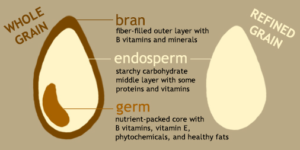
The image below by CerealsDB shows how roller mills are used in the process of milling wheat. On their website, they also explain the different types of wheat which may be produced by the wheat, as well as their characteristics.
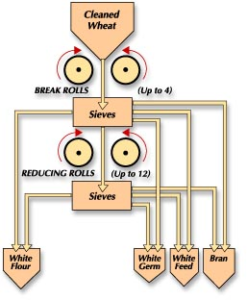
Refining is another major process that can be done to develop a different type of food from the same material. Not all foods go through this process, and some foods are more refined than others. Refining strips food of its natural condition and nutritional qualities. Refined foods lack nutrients like fibre, vitamins, and minerals. For example, the refining of some grains removes bran, germ, and fibre, to create pizza dough, pasta, and pastries.
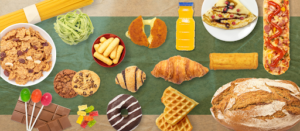
Now you know of some of the many processes that our foods go through to be produced, and safe for us consumers. Here is a video showcasing factory machines doing food processing, if you are interested in visuals of how different foods are produced. I also once again recommend visiting this chart to learn of other processes that different foods go through.
https://sites.google.com/site/rinarinasite/
https://www.cerealsdb.uk.net/cerealgenomics/WheatBP/Documents/DOC_Milling.php
https://www.iloencyclopaedia.org/part-x-96841/food-industry/overview-and-health-effects/item/857-food-industry-processes
https://slideplayer.com/slide/8131454/
https://www.livestrong.com/article/27460-list-refined-foods/
https://www.foodengineeringmag.com/articles/100394-the-state-of-food-manufacturing-in-2022

